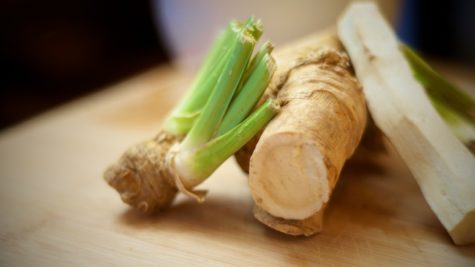Horseradish
Gypsy Cures for Freckles
While freckles are fabulous, they haven’t always been considered the trademark of a gorgeous person. For centuries, beauty was sought in “flawless” skin and perfectly porcelain complexions. Freckled girls everywhere were constantly told they weren’t beautiful because of the dots that patterned their faces.
No more! As of late, freckles have become the must-have beauty essential. Having freckles is no longer just something you have to live with; it’s something to be desired.
If, however, you are not enjoying your freckles, here are some old Gypsy cures:
All you need is horseradish and milk. Scrape 2 tablespoons of the horseradish into a basin and pour half a pint of boiling milk over it. Don’t strain. When it is cold, use the mixture to cover the face thickly, especially any areas which may be heavily freckled. Leave to dry for half an hour, and then wash off with tepid water. Repeat at intervals of two or three days until the freckles have vanished.
Another way to discourage freckles is to gather the youngest leaves from an elm tree after rain or when the dew is on. Draw the leaves gently over the face leaving the liquid to dry on. Not only will this discourage freckles, it will also soften the skin and make it more beautiful.
Don’t worry if you are caught unawares on a lovely day and have no patent skin protection handy. All you need is a cucumber. Simply cut a slice and rub it over the face, neck and hands, leaving the juice to dry on. Not only will it give protection from sunburn it will freshen and revitalize the skin and also soften it, if left on overnight, it acts as a gentle astringent.
Horseradish – A Fiery Herb
Many people don`t enjoy their roast beef without horseradish sauce. The horseradish is a plant of Mars, the fiery planet of war, so no wonder it is hot! Plant it in your garden and unless you keep it under control it will over run everything. It stimulates the appetite and helps the liver to work well, so add it to salads whenever you can.
The Romanies knew nothing of bacteria and germs, but they knew by instinct and their own lore that horseradish had strong antiseptic qualities, so give it a regular place in your diet. Add it to mayonnaise, tomato juice and to cheese spreads.
More about horseradish:
- Common Names: Horseradish
- Latin Name: Armoracia rusticana
- Parts Used: Root and leaves
- Cultivation: Horseradish grows best in moist, rich, heavy soil with a pH of 6.8, in full sun. It is a perennial hardy to zone 5.
Culinary Uses: Horseradish is probably best known as the spicy condiment made by mixing grated fresh horseradish root with vinegar or mayonnaise. You can also add the young leaves sparingly to salads.
Magickal Uses: Sprinkle dried, powdered horseradish around your house to repel evil and negate any spells against you.
Medicinal Uses: Horseradish is one of the more potent herbal diuretics, and as such is used to treat kidney disease. It stimulates the digestion. Use it externally as a compress for neuralgia, joint stiffness, and rheumatism.




